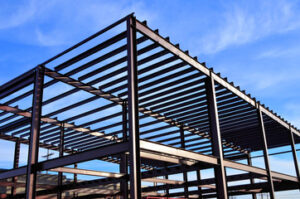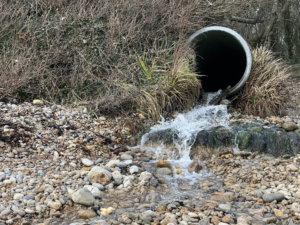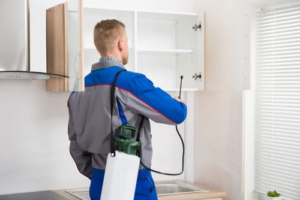Mini Goldendoodles are incredibly social dogs with a happy-go-lucky attitude inherited from their Golden Retriever genes. They love to bond with their owners and can turn a simple evening walk into a meet-and-greet with everyone they encounter.
These dogs require daily physical exercise and playtime. If they do not get enough exercise, they can develop behavioral problems. Contact Puppy Love Paradise now!

Mini Goldendoodles are a popular choice for families who have allergies or are looking for a dog that doesn’t shed much. This is because they’re part poodle, which tends to shed less than Golden Retrievers. However, they will still shed a little bit. The best way to minimize shedding is to follow grooming routines and proper care.
Regular brushing will help prevent matting and remove loose hair from the coat, reducing shedding. You can use a slicker brush to fluff the top layer and a metal brush or rake to work on the undercoat. It’s also important to give your dog regular baths using a high-quality shampoo that is made for dogs.
This breed requires lots of social interaction and attention. They are affectionate and bond closely with their humans, and thrive when they’re included in family activities and household routines. If they’re isolated or left alone for long periods, they can become anxious and depressed. This is why it’s so important to incorporate them into your life and be present with them throughout the day.
This breed is prone to health problems, especially joint disease and cataracts. They’re also at risk of developing urinary tract infections and gastrointestinal issues. Taking steps to prevent these conditions by feeding your dog a balanced diet and maintaining a healthy weight will improve their quality of life. A consistent exercise program will also help maintain their physical well-being. It’s also a good idea to consult your vet before getting this breed to make sure that they have all the required vaccinations and are up-to-date on parasite control. You should also consider getting your dog spayed or neutered to improve their overall health and prevent unwanted litters.
They are a high-energy breed
They love being involved in family activities and enjoy interacting with all members of the household. They are highly intelligent and fast learners, making them easy to train. They also have a strong affection for their human families and are very receptive to positive reinforcement. They are devoted friends that crave cuddles and will follow their humans around just to be near them.
Like other dogs, Mini Goldendoodles may suffer from certain medical conditions that require routine care and monitoring. These dogs are susceptible to allergies, which can lead to itching and other skin irritations. They may also be sensitive to fleas and other parasites. Regular grooming practices can help minimize the severity of these reactions.
Aside from avoiding allergens, mini Goldendoodles need to be regularly groomed to maintain their healthy coats and avoid matting. They can be brushed daily if their hair is long, and they should be bathed less frequently than other dog breeds because frequent bathing can dry the natural oils in their fur.
In general, Mini Goldendoodles are very easy to train. They respond well to positive reinforcement and consistent training. They are also good candidates for dog sports such as agility or obedience. These dog sports offer additional outlets for physical activity and can further strengthen the bond between you and your pet.
Despite their loving and sociable nature, these dogs can occasionally develop separation anxiety. This can be addressed through gradual desensitization and the use of interactive toys and puzzle feeders. This will prevent them from exhibiting destructive behaviors and allow them to remain happy in their homes. If these behavioral challenges persist, professional guidance from a dog trainer or behaviorist can be beneficial.
They are a low-maintenance breed
Mini Goldendoodles are a low-maintenance breed, requiring little more than regular brushing and occasional baths. They shed only lightly and do not produce much dander, making them an excellent choice for people with allergies. They also tend to live longer than other dog breeds, with an average lifespan of 10-15 years. This makes them a good choice for families, retirees, or individuals with busy lifestyles.
This breed has a naturally gentle temperament and is very affectionate towards children. They are also very intelligent, which means they are easy to train and adapt well to different environments. They are also a great fit for active families, as they are happy to play and exercise with their owners. However, they can get bored easily and should be given ample opportunities for mental stimulation.
As a result of their Poodle heritage, these dogs have a curly or wavy coat that sheds very minimally and produces little dander. Because of this, they are a popular choice for people with allergies. However, keep in mind that every individual dog is unique and may still trigger allergies in certain individuals.
While these puppies have a low maintenance and grooming schedule, it is important to understand their needs before bringing one home. This includes brushing them a few times a week to prevent matting and tangling, as well as trimming their nails regularly to avoid overgrowth. Also, it is a good idea to have them checked by a veterinarian at least once a year.
Another consideration is the cost of care and other expenses associated with owning a pet. Although the initial purchase price of a Mini Goldendoodle is relatively affordable, unforeseen veterinary costs can add up quickly. Therefore, it is a good idea to consider pet insurance to help cover these costs.
They are a friendly breed
Mini Goldendoodles are intelligent, friendly dogs with a love of play. They are good with children and can bond easily with their families. They are also great with other animals and can be well behaved around strangers. They are easy to train using positive reinforcement methods, and they can excel at advanced training or dog sports. They have a low-shedding coat, which makes them a popular choice for people with allergies.
The Mini Goldendoodle can come in a variety of colors and coat textures, depending on the parent breeds. The Golden Retriever contributes genes for cream, apricot, and red, while the poodle offers genes for black, chocolate, silver, and grey. They can also have different coat patterns, such as merle, parti, or brindle.
This versatile breed is easy to care for and can adapt to a variety of lifestyles. The best way to keep your doodle happy and healthy is to provide him with daily physical and mental stimulation. This can be accomplished through walks, playtime, and interactive games. This will help him burn off pent-up energy and prevent him from becoming destructive. It is also important to brush his coat regularly to prevent matting and maintain its appearance.
The Mini Goldendoodle is an energetic, social breed that requires regular exercise and training. Its moderate energy levels make it suitable for most owners, but they may become destructive if not properly stimulated. It is important to take him for regular walks and a long, off-leash play session in a safe, fenced area. You should also brush his ears frequently with a gentle ear cleaner and trim his nails every three to four weeks. This will help reduce the risk of ear infections and maintain good dental hygiene.
They are a good family dog
Despite their small size, Mini Goldendoodles are energetic dogs that enjoy playing with children. Their playful personalities are a great match for families with young children, and their small size makes them safer than larger breeds when it comes to handling. They also get along well with other pets and household members. They can also be prone to separation anxiety, which should be addressed with positive reinforcement training and proper socialization.
Like all dogs, Mini Goldendoodles need regular grooming and care to stay healthy. Daily brushing, baths, and nail trims are essential. It is also important to keep your dog up-to-date on vaccinations, parasite prevention, and routine health examinations. During hot summer months, make sure your dog has access to water and shade to prevent overheating. In colder weather, adjust their exercise regimen to accommodate shorter daylight hours and inclement weather. Mental stimulation is also critical, and can be accomplished through obedience training, puzzle toys, and interactive games.
Some Mini Goldendoodles may bark excessively or exhibit digging behaviors, which can be caused by boredom, anxiety, or natural instincts. Excessive barking and digging can be addressed through positive reinforcement training and by redirecting their energy to more appropriate activities. For example, you can use an interactive dog digging toy or create designated outdoor play spaces to help your pet burn off excess energy and prevent destructive behavior.
Because they are smart and easily trainable, Mini Goldendoodles are often used as service or emotional support animals. They can be trained to perform tasks that help people with disabilities, such as retrieving objects for those in wheelchairs or reminding them to take medication. They can also be trained to provide companionship for those suffering from depression or panic attacks, or to alert them before a seizure.








